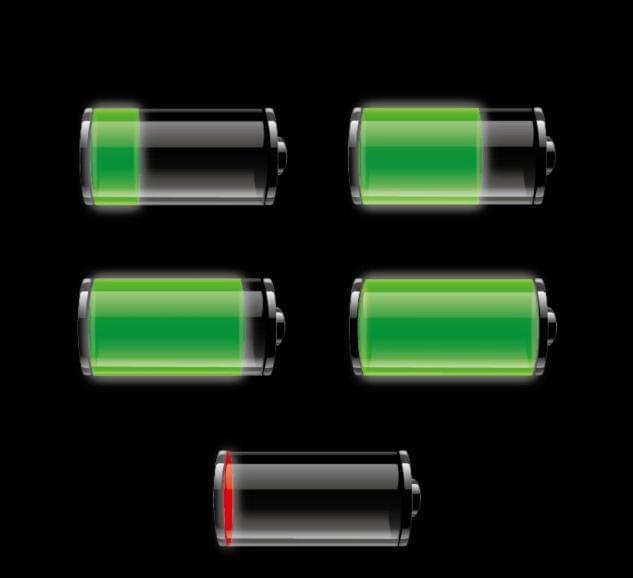
With the proliferation of battery-powered applications, the demand for high-quality and inexpensive batteries and battery packs continues to soar. Battery manufacturers continue to adopt new chemicals and introduce smaller sizes, and new and complex limitations and requirements have been created, but the basic function of the battery has not changed: extended operating time and shelf life without compromising system performance.
A greater reduction in static current (IQ) is the preferred option to reduce power consumption and thus extend battery life. The IQ of a device is the amount of current flowing out or power consumed when the battery is in standby mode or running under light load. IQ can significantly affect the energy efficiency of a device. In battery-powered applications, achieving high energy efficiency during no-load or light-load operation requires a power management solution that maintains ultra-low supply currents while maintaining tight control over output.
Many of today's designs require only a few nanoampas of IQ, a feature that benefits many applications that require long periods of standby operation, from electric vehicles (EVs) to power tools and various types of headphones. Since these systems spend more than 99% of their time in standby mode, IQ in standby or sleep mode is a limiting factor for battery life.
Optimize power management blocks and power management devices such as DC/DC converters, low voltage drop regulators (Ldos), power switches, voltage reference and monitors to help reduce energy consumption and extend battery life.
Below are our top three low-IQ technologies that extend battery life and shelf life without compromising system performance.
Supports the design of low power consumption, normally open power supply
Ultra-low leakage process technology and new control topology extend battery operation time. Achieving an ultra-low IQ when the system is in standby mode can extend battery life.
In Figure 1, the Texas Instruments TPS37-Q1 monitor performs EV battery monitoring with a typical IQ of 1µA while supporting a power supply voltage of up to 65V, with no impact on power supply space or response time.
Figure 1: Direct 12V/48V non-battery supply voltage monitoring with the Texas Instruments TPS37-Q1

Battery charger integrated circuits (ics), such as the Texas Instruments BQ25155 with an IQ of 10nA in chip mode, help ensure that batteries don't run out of power while sitting on the shelf for months, or even years. Low-power regulators, such as the Texas Instruments TPS7A02 with an ultra-low IQ (25nA) and an IQ of only 3nA in transport mode, help significantly extend battery life in normal and low-drop operating modes.
Fast response
The fast wake comparator and zero IQ feedback control enable fast dynamic responses without compromising low-power performance. The intelligent biasing scheme can increase the voltage of the comparator instantaneously when an error is detected, increasing the response speed without consuming more IQ. For example, in Figure 2, the Texas Instruments TPS62843 step-down switching regulator with a typical IQ of 275nA has a response time x IQ/ILOAD value that is more than three times higher than previous generations. In addition, the response time and detection time of the Texas Instruments TPS37-Q1 are also extremely short in the industry (typical value of 8µs), which is two to ten times faster than competing products.
Figure 2: The load transient data of Texas Instruments TPS62843 is 1.2VOUT, IOUT_MIN = 0A, IOUT_MAX = 300mA

Downsizing
Area reduction technology for resistors and capacitors facilitates integration into space-constrained applications without compromising static power. In the next generation of nanowatt-class devices, most external pull-up or pull-down resistors and external resistance divider networks are no longer required, and the form factor is smaller, such as the Texas Instruments TPS7A02 with a 640µm x 64µm Chip-Scale Package.
Another way to save board area is to integrate more functions onto a single bare chip. This integration enables individual modules such as monitors, reference systems, low voltage drop regulators, battery chargers, and DC/DC converters to share common building blocks while reducing the total IQ size. The Texas Instruments BQ25125 is a battery charger management IC with a 2.5mm x 2.5mm Wafer Chip-Scale Package that integrates with I2C and provides flexibility to control multiple low-IQ functions. This enables designers to use the entire power management system to power multiple low-power applications.
Conclusion
Battery-powered applications are now ubiquitous, and there is a growing demand to reduce IQ without compromising system performance, which is a difficult task. But don't be discouraged. With Texas Instruments' ultra-low IQ based portfolio, you don't need to worry about performance and cost trade-offs to achieve ultra-low power consumption in next-generation battery-powered designs, maximizing battery uptime and shelf life.
About US
Heisener Electronic is a famous international One Stop Purchasing Service Provider of Electronic Components. Based on the concept of Customer-orientation and Innovation, a good process control system, professional management team, advanced inventory management technology, we can provide one-stop electronic component supporting services that Heisener is the preferred partner for all the enterprises and research institutions.
